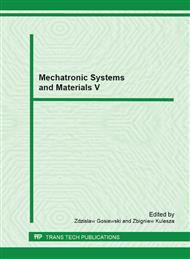p.247
p.253
p.261
p.267
p.273
p.279
p.285
p.291
p.297
Application of the 'Iterative Closest Point' Algorithm for Determination of Rotation Axis of a Turntable
Abstract:
Reverse engineering [ is a field of technology which has been under rapid development for several recent years. Optic scanners are basic devices used as reverse engineering tools. Point cloud describes the shape of a scanned object. Automatic turntable is a device which enables a scanning process from different viewing angles. In the paper, the algorithm is described which has been used for determination of rotation axis of a turntable. The obtained axis constitutes the base for an aggregation of particular point clouds into single resultant common cloud describing the shape of the scanned object. Usability of this algorithm for precise scanning of mechanical parts was validated, precision of shape replication was also evaluated.
Info:
Periodical:
Pages:
273-278
Citation:
Online since:
March 2013
Authors:
Keywords:
Price:
Сopyright:
© 2013 Trans Tech Publications Ltd. All Rights Reserved
Share:
Citation:


